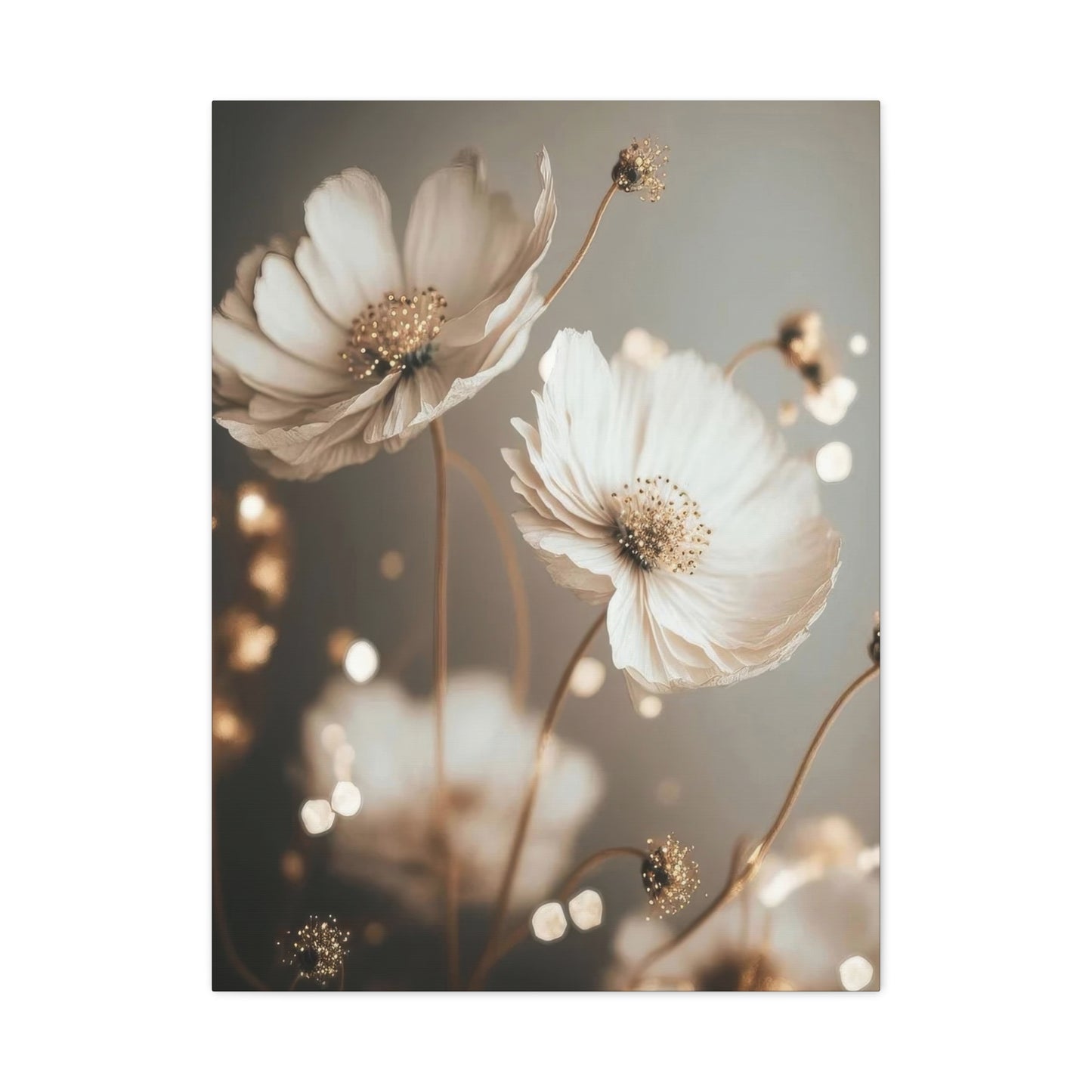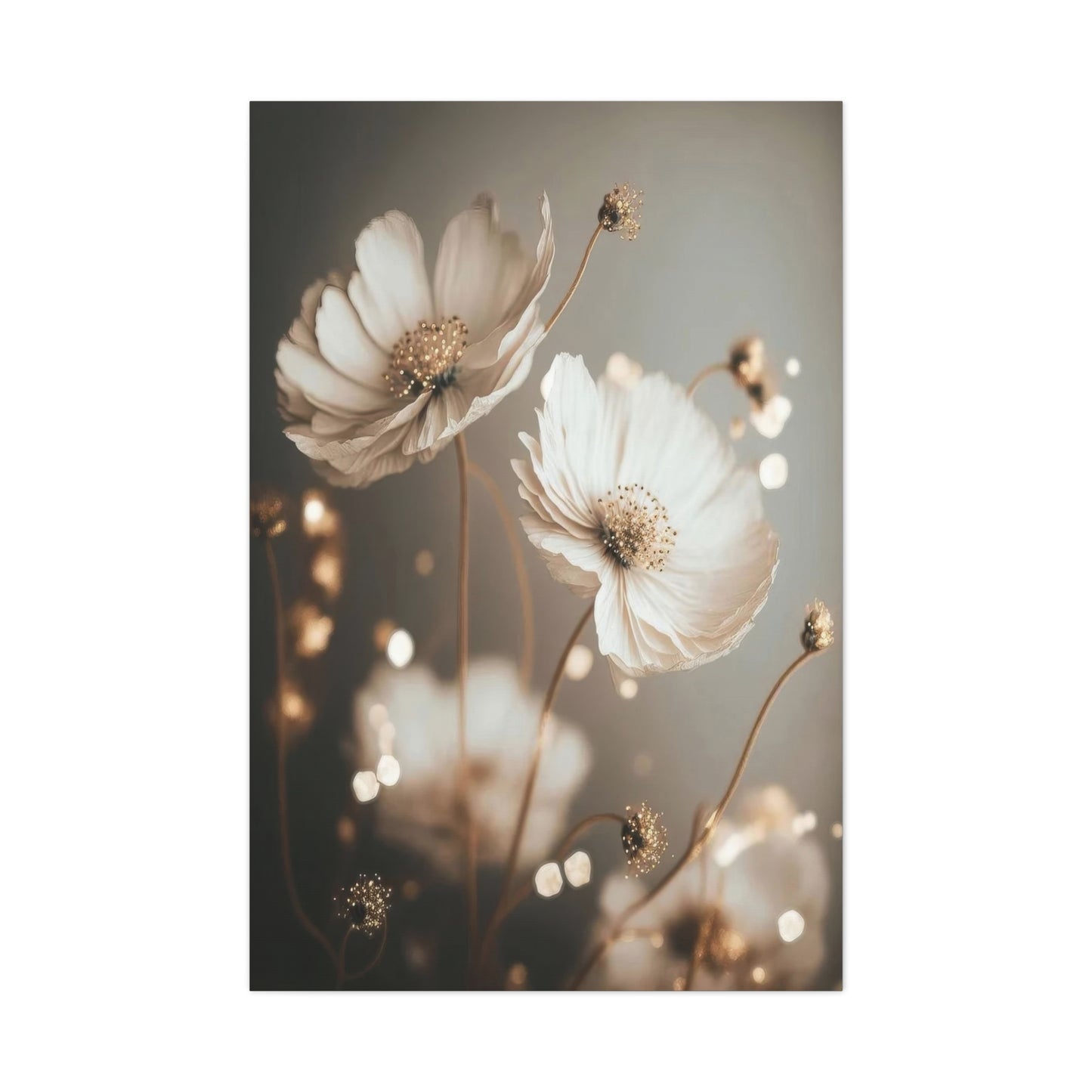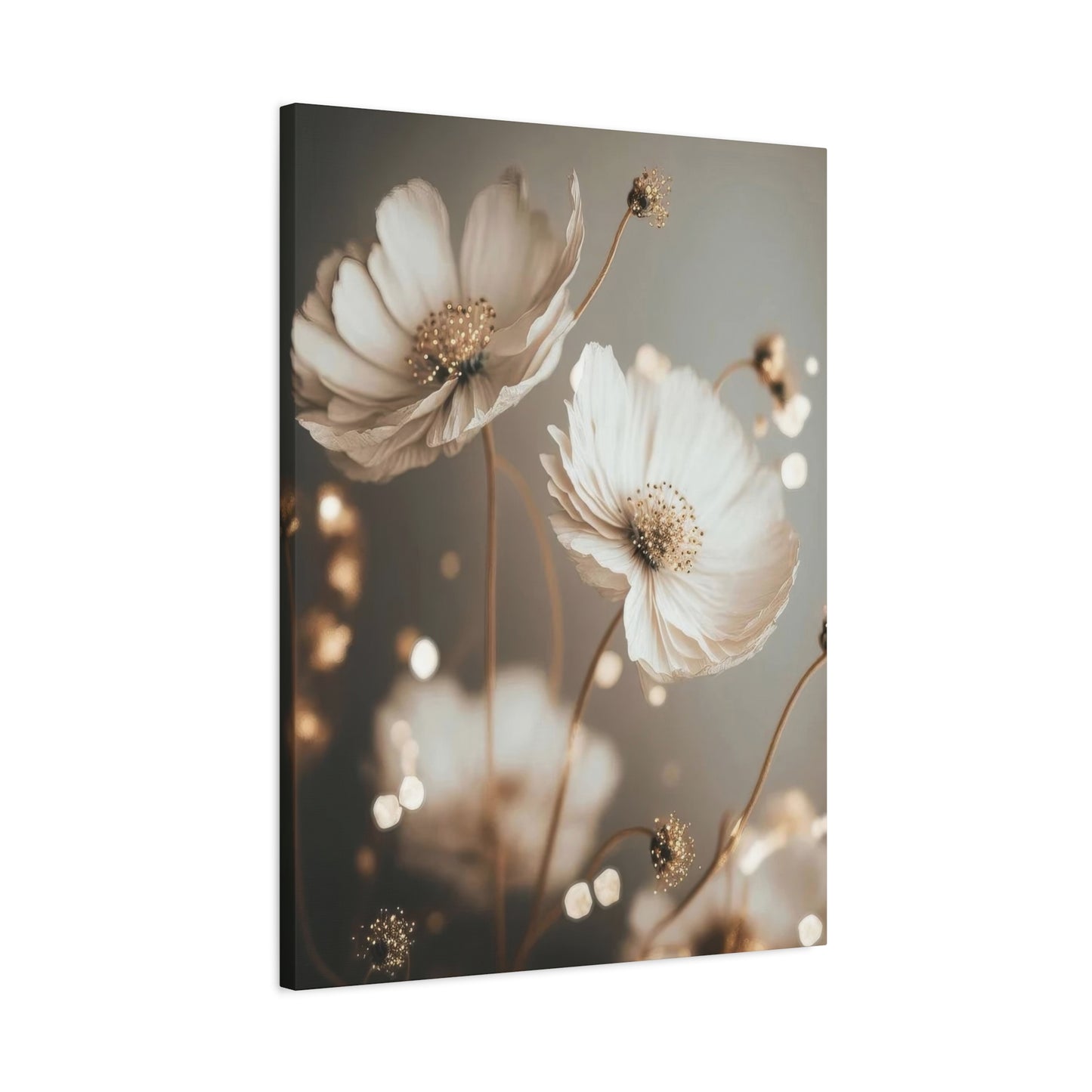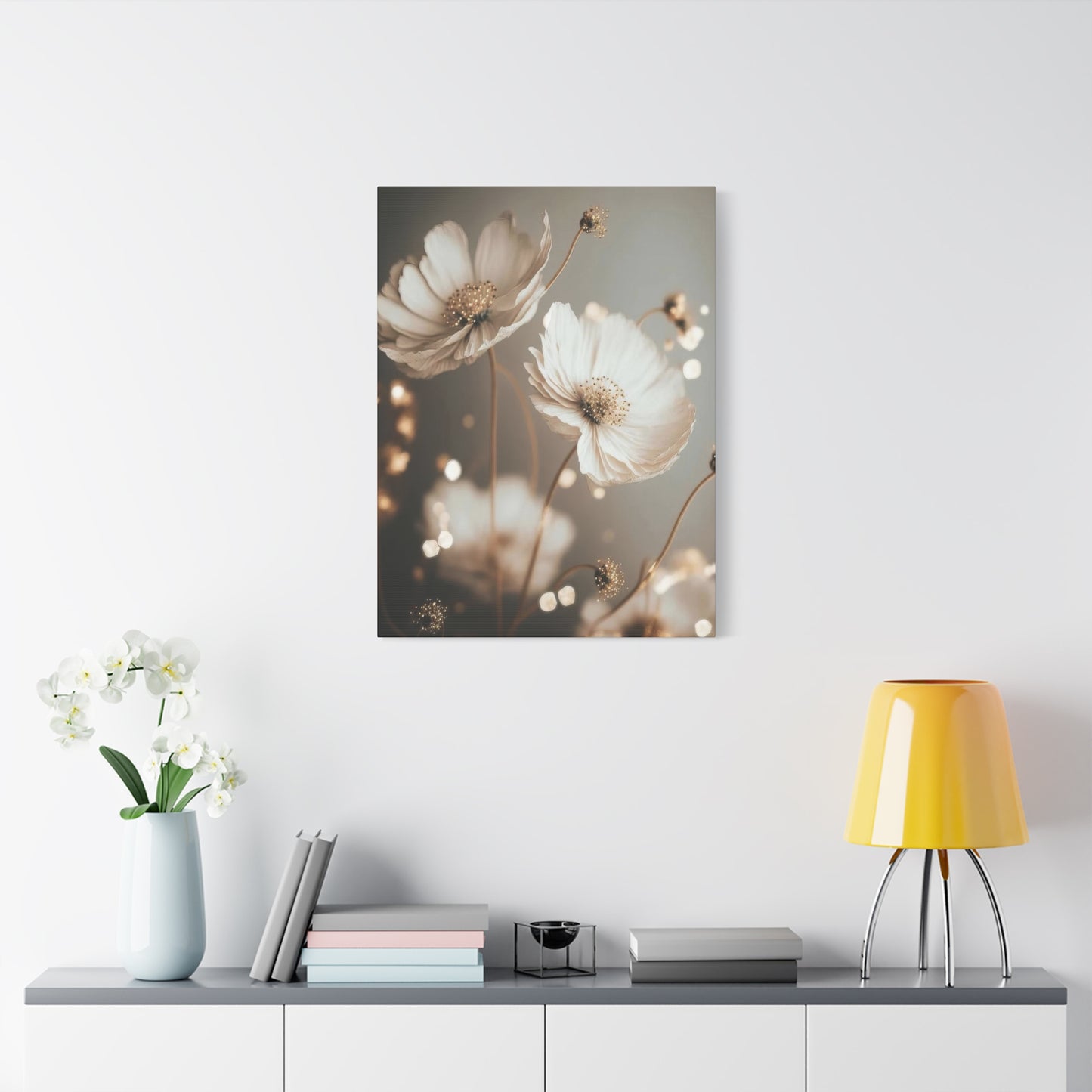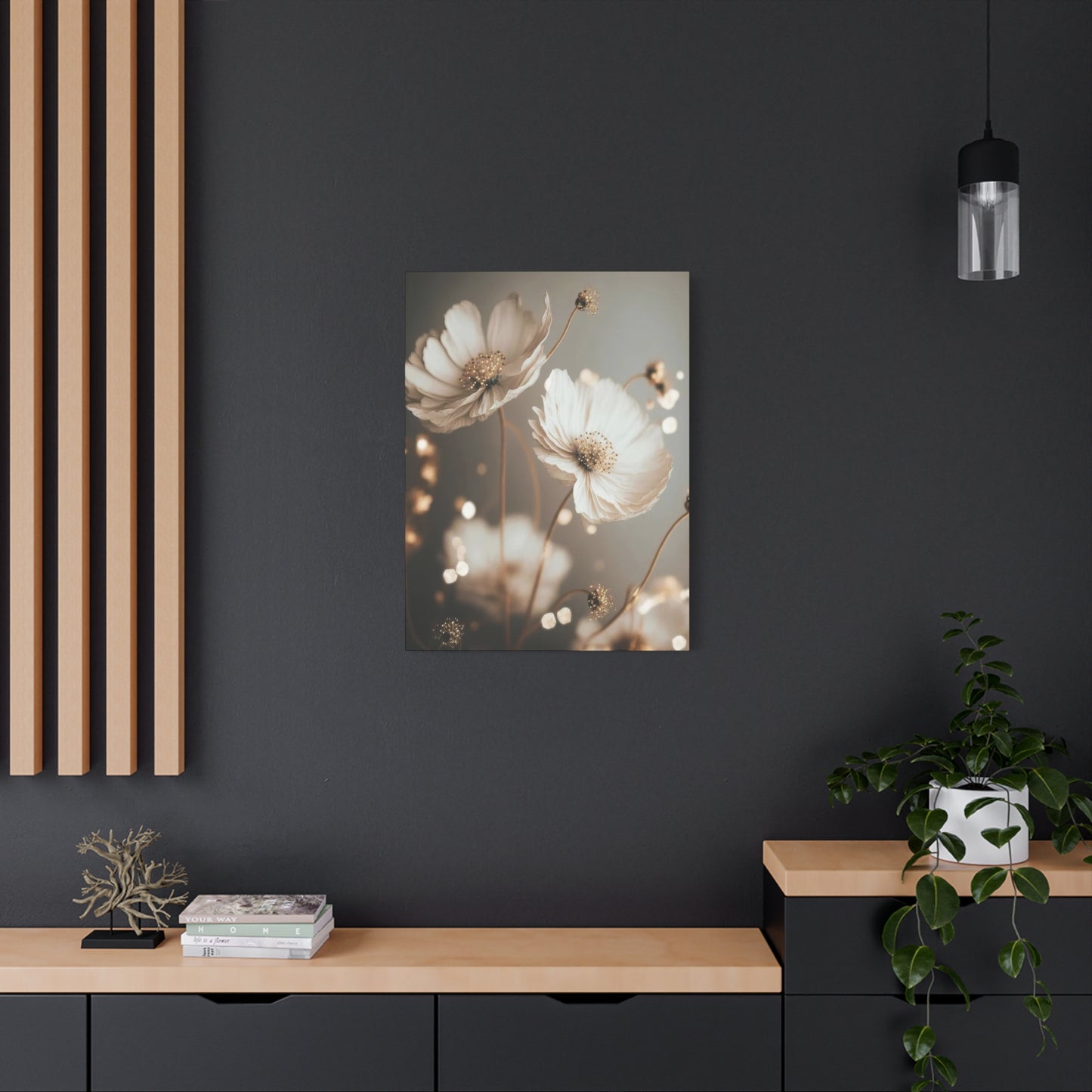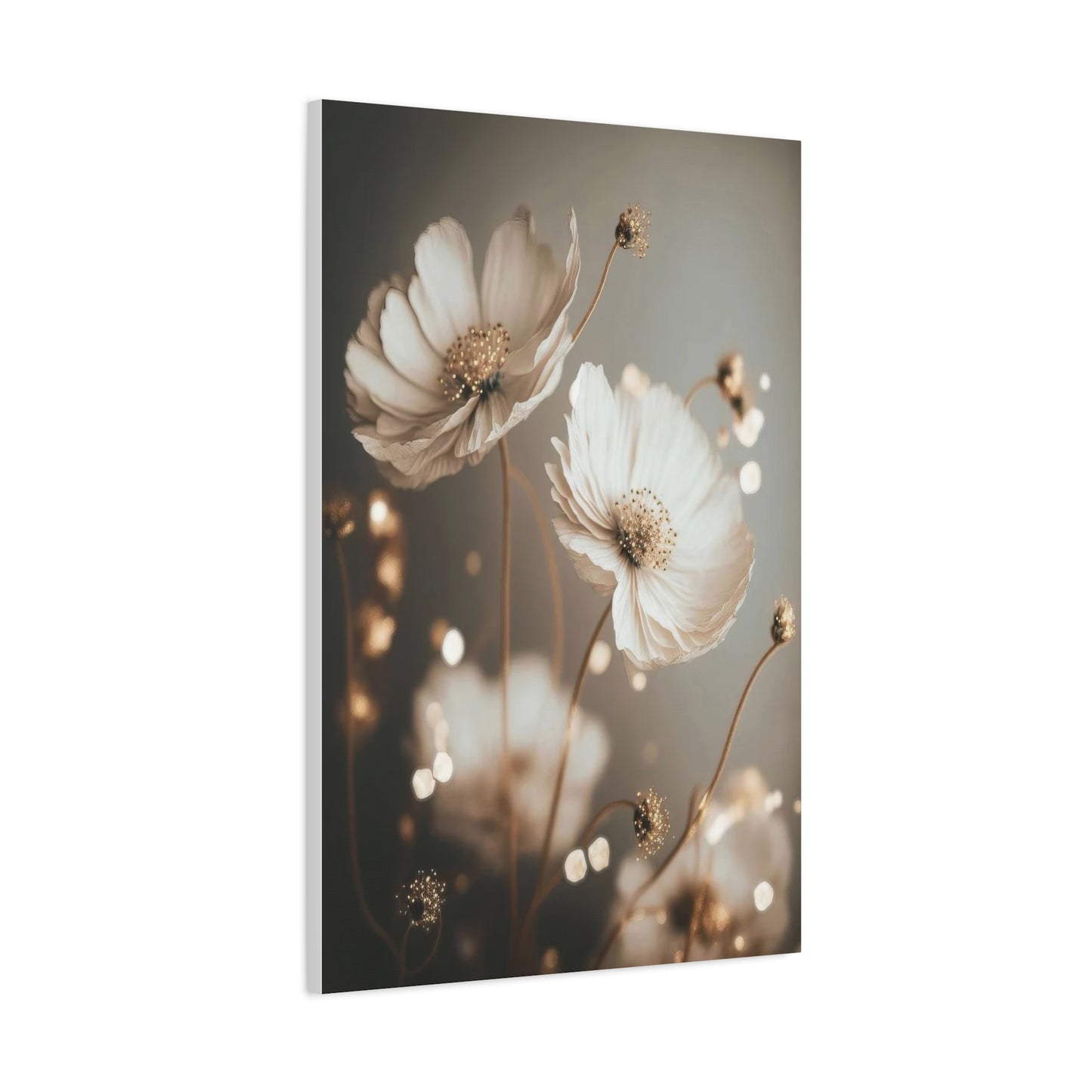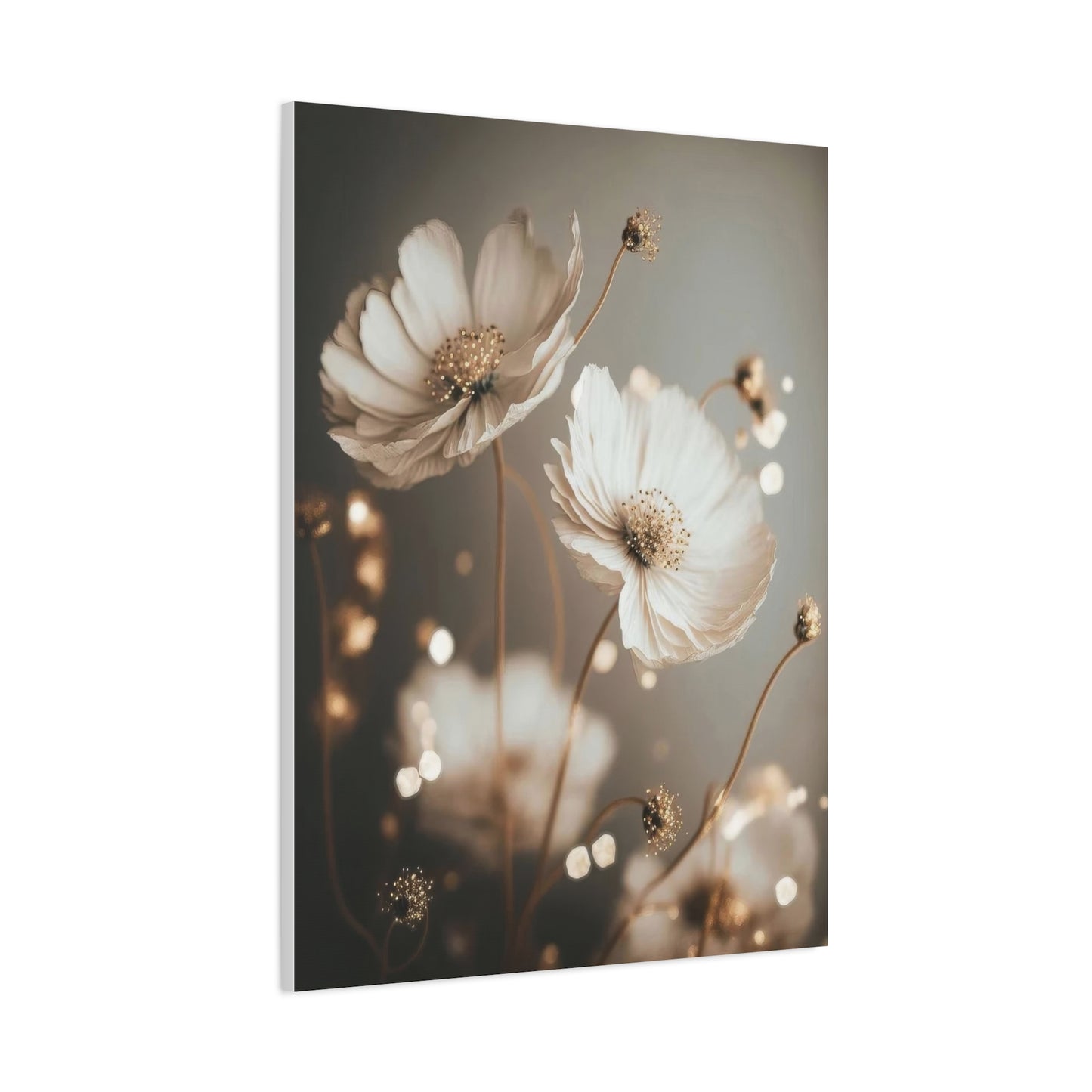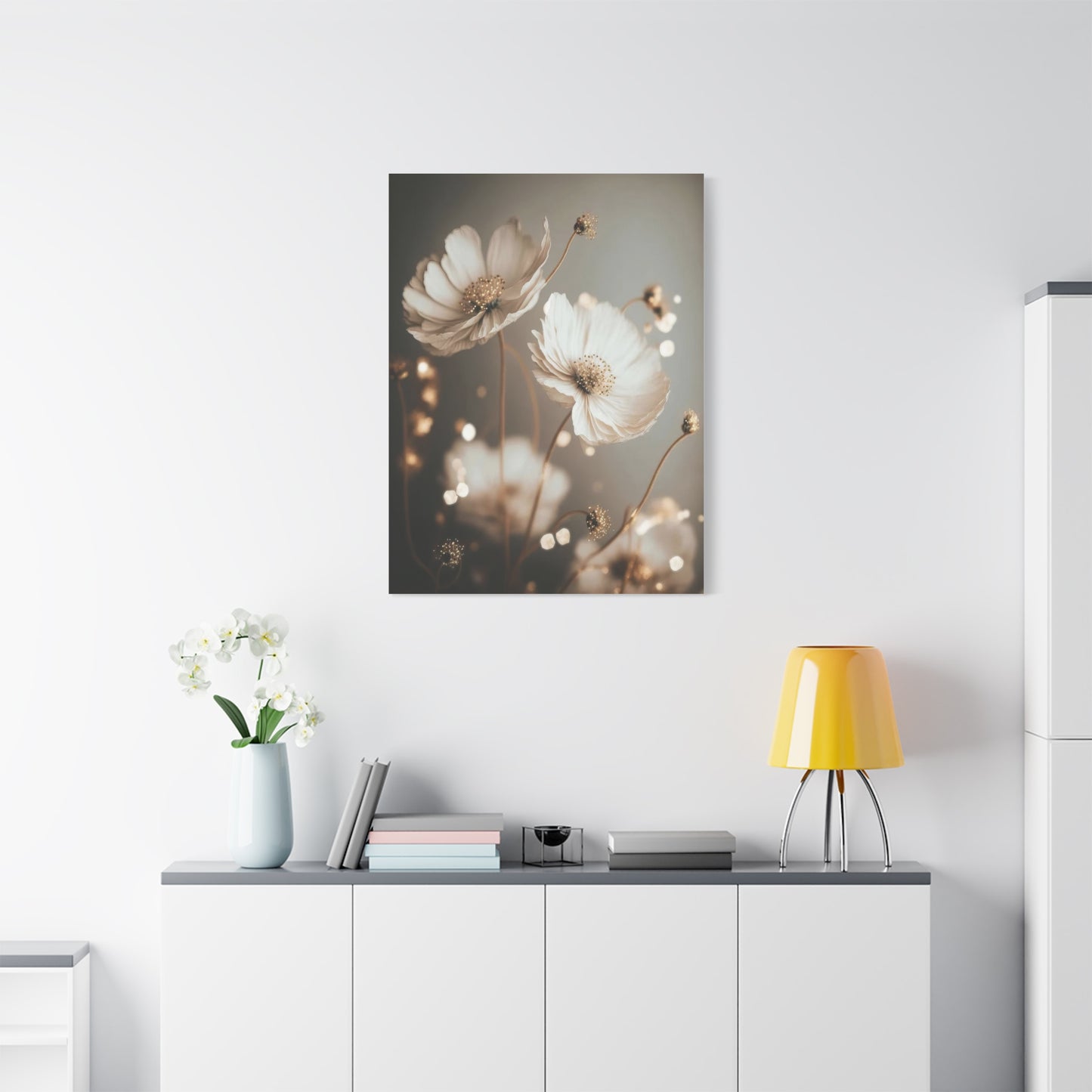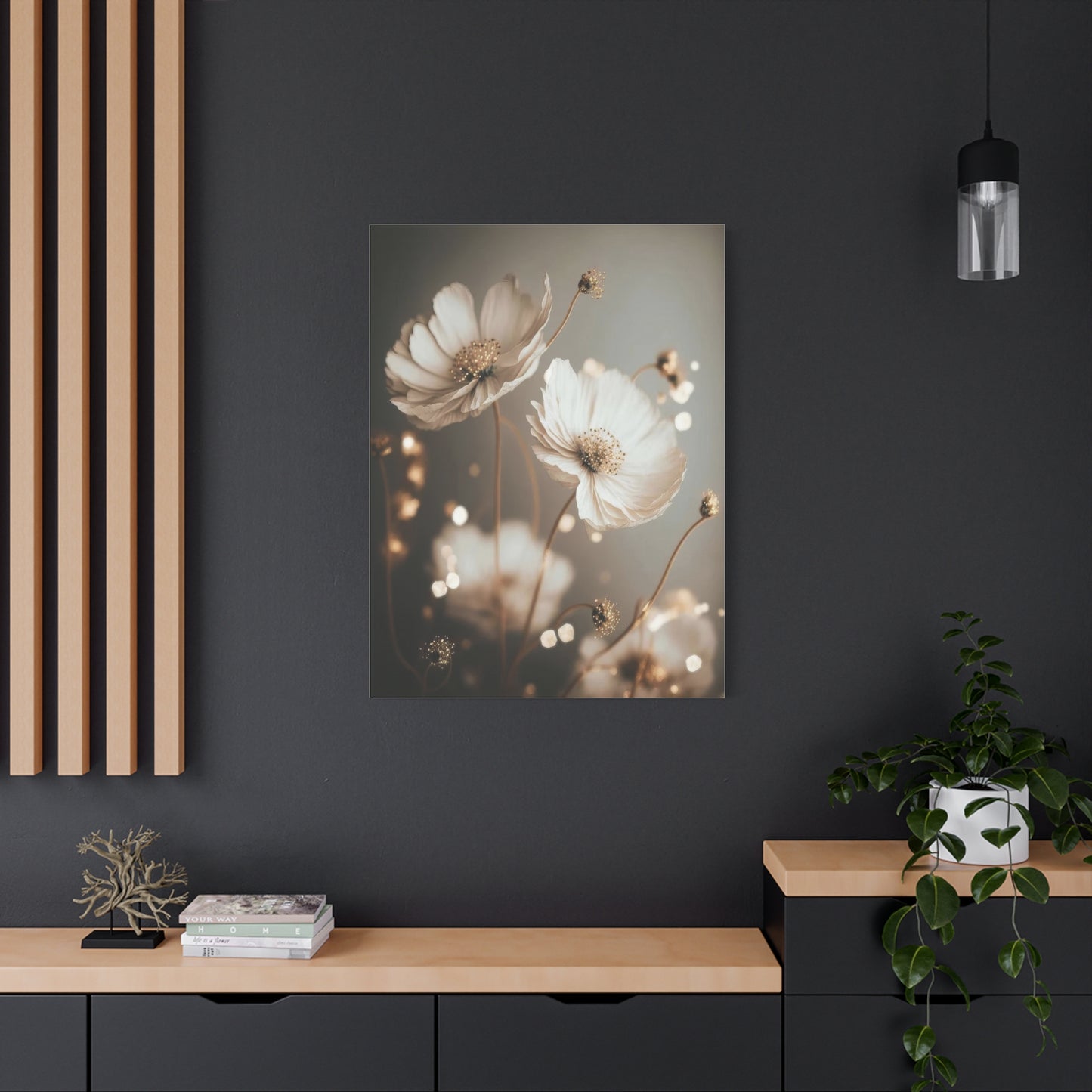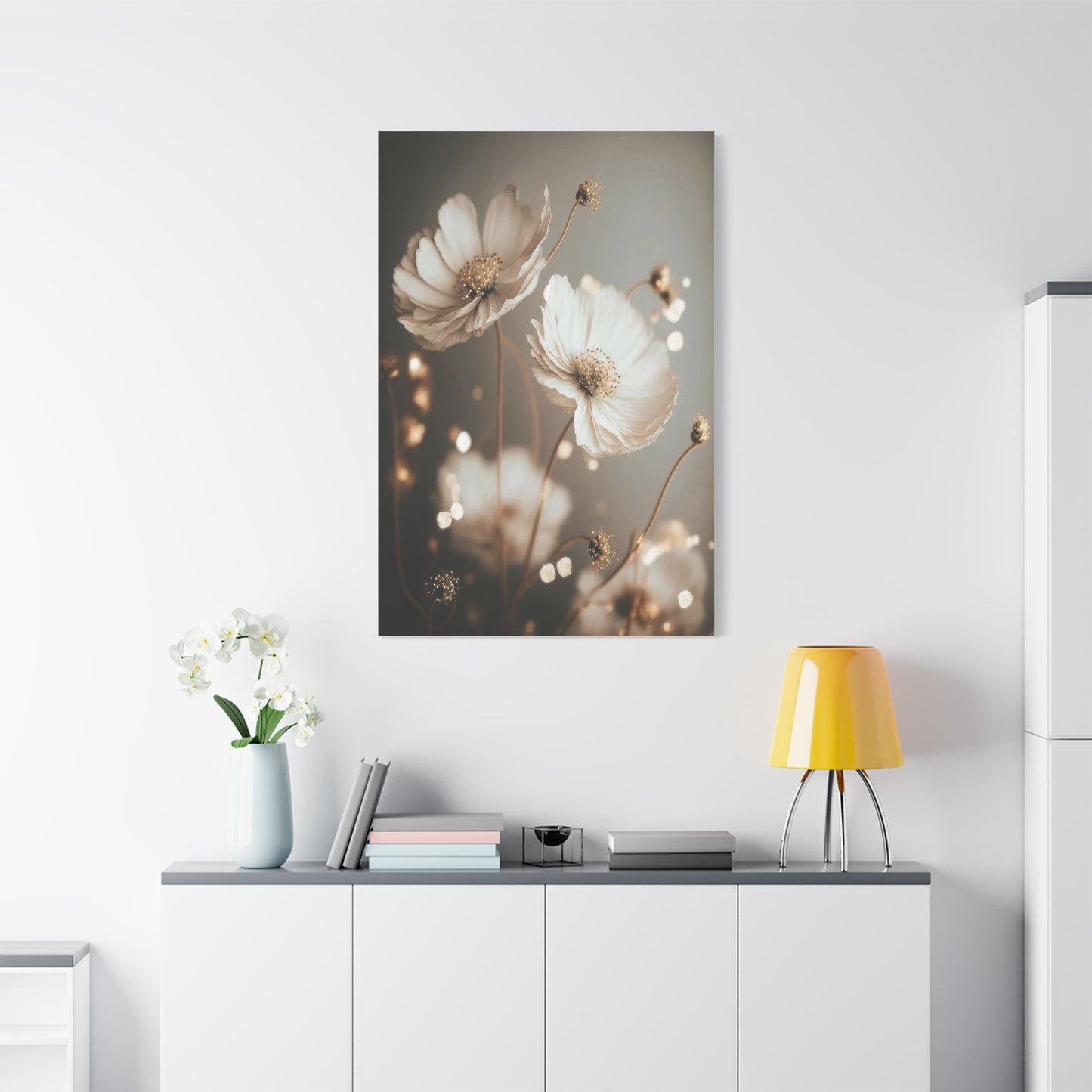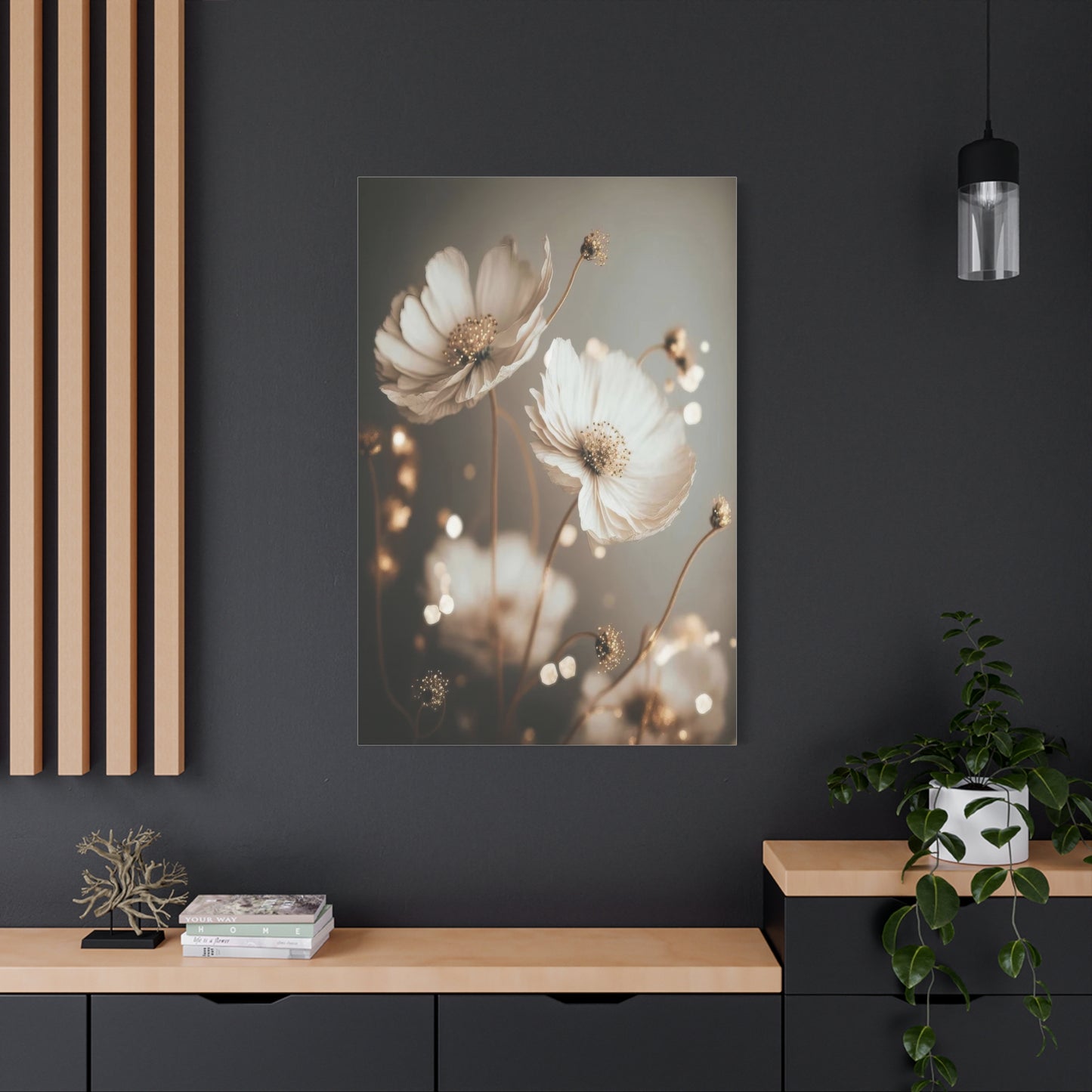How to Choose the Right Ethereal Blooms Wall Art for Your Bedroom
The presence of floral artwork within interior spaces has long been celebrated for its ability to infuse environments with warmth, tranquility, and visual interest. Among the various styles and approaches to botanical art, one particular aesthetic stands out for its delicate grace and soothing presence. This style captures flowers in their most tender, dreamlike state, presenting them through soft focus, gentle colors, and an almost otherworldly quality that seems to float between reality and imagination. When incorporated thoughtfully into living spaces, this approach to floral imagery creates atmospheres of profound peace and gentle beauty that resonate with inhabitants on both conscious and subconscious levels.
The appeal of such artwork lies not merely in its subject matter but in the way it presents familiar natural elements through a lens of soft romanticism and quiet contemplation. Rather than bold, dramatic statements, these pieces whisper their beauty, inviting viewers to pause, breathe, and connect with the serene energy they radiate. This quality makes them particularly valuable in contemporary homes where stress reduction and the creation of personal sanctuaries have become increasingly important priorities for homeowners and renters alike.
Throughout this exploration, we will delve deeply into the many dimensions of incorporating this style of floral artwork into various living environments, examining how its unique characteristics interact with different design philosophies, room functions, and personal aesthetic preferences. From the psychological effects of viewing soft floral imagery to practical considerations about placement and pairing, this comprehensive examination will provide readers with the knowledge and inspiration needed to thoughtfully integrate these beautiful pieces into their own spaces.
Discovering Inner Peace Through Delicate Floral Imagery in Your Living Environment
The connection between visual stimuli and emotional states has been documented extensively by researchers in psychology and neuroscience. When eyes encounter images of flowers rendered in soft, muted tones with gentle transitions and minimal harsh contrasts, the nervous system responds with a measurable relaxation response. This physiological reaction occurs because the brain interprets such imagery as non-threatening and harmonious, triggering the parasympathetic nervous system which governs rest and recovery functions.
In the context of home environments, where individuals retreat from the demands and stresses of external life, the presence of artwork that actively promotes relaxation serves a practical wellness function. Unlike more stimulating or challenging art that demands intellectual engagement or emotional processing, soft floral pieces provide visual rest. They offer places for the eye to land comfortably, without struggle or effort, creating pockets of calm within the visual landscape of a room.
The specific qualities that contribute to this calming effect include the organic, flowing forms of petals and stems that lack the rigid geometry of human-made objects. These natural curves and soft edges echo patterns found throughout the natural world, forms that human beings have evolved alongside for millennia. This deep familiarity creates a sense of recognition and comfort at a primal level, even when viewers are not consciously aware of the response.
Color plays an equally important role in the tranquilizing effect of this artwork style. Palettes dominated by soft pinks, gentle lavenders, creamy whites, and muted greens create chromatic harmony that feels inherently peaceful. These hues lack the stimulating intensity of bright primaries or the dramatic tension of high-contrast combinations, instead offering viewers a visual experience similar to viewing flowers through morning mist or in the gentle light of dusk.
The slightly abstracted quality common to this style of floral art also contributes to its calming properties. When flowers are rendered with soft focus or gentle blending, they become more suggestion than precise documentation. This quality engages the imagination gently, allowing viewers to complete the image in their minds based on their own experiences and associations with flowers. This gentle cognitive engagement provides a form of meditation, a brief respite from more demanding mental tasks.
Incorporating such artwork into living spaces creates what environmental psychologists call "restorative environments," settings that help individuals recover from mental fatigue and stress. The bedroom, living room, or any space where relaxation is a primary goal becomes more effective in that function when visual elements support rather than compete with the desired mood. A single piece of soft floral art can shift the entire emotional tone of a room, providing a focal point that anchors the space in tranquility.
The placement of these pieces matters significantly to their calming effect. Positioning artwork at eye level when seated allows for comfortable viewing during moments of rest and reflection. In bedrooms, placing such art where it is visible from the bed provides a gentle image to focus on before sleep or upon waking, bookending the day with moments of visual serenity. In living spaces, positioning these pieces in sight lines from seating areas ensures that their calming influence is accessible during everyday relaxation.
Crafting Gentle, Peaceful Atmospheres with Soft Botanical Wall Decorations
The creation of serene interior environments requires careful attention to all elements within a space, from furniture selection and lighting design to color schemes and decorative accents. Within this complex orchestration of design elements, wall art plays a surprisingly influential role in establishing and maintaining desired atmospheric qualities. Soft floral artwork contributes to serene environments through multiple mechanisms, working both independently and in concert with other design choices.
The first consideration in using such artwork to create peaceful atmospheres involves understanding color harmony and its psychological effects. Rooms designed for relaxation benefit from cohesive color stories that flow smoothly from walls to furnishings to decorative elements. When floral artwork features tones that echo or complement the room's existing palette, it reinforces the color harmony rather than disrupting it. This creates a sense of visual completeness and intentionality that registers subconsciously as order and peace.
For example, in a bedroom decorated primarily in soft grays and whites, artwork featuring pale pink and ivory flowers with silvery-green foliage creates a seamless visual flow. The artwork feels like a natural extension of the room's aesthetic rather than an addition or afterthought. This integration is key to creating environments that feel cohesive and thoughtfully composed, qualities that directly contribute to the serene vibe many homeowners seek.
Beyond color coordination, the subject matter itself carries inherent associations that influence room atmosphere. Flowers universally symbolize growth, renewal, beauty, and the cycles of nature. Even in urban environments far removed from gardens and meadows, images of blooms trigger associations with peaceful natural settings. This connection to nature, even secondhand through art, provides psychological benefits documented in numerous studies on biophilic design, the practice of incorporating natural elements into built environments.
The softness characteristic of this style of floral art also contributes significantly to creating gentle atmospheres. In design terms, "softness" refers to the absence of harsh lines, stark contrasts, and aggressive colors. Soft designs feel approachable, comfortable, and unthreatening. In living spaces, particularly those intended for rest and relaxation, soft visual elements help lower psychological guards and facilitate the transition from active, alert states to receptive, relaxed ones.
Texture perception also plays a role, even in two-dimensional artwork. When floral images are rendered with techniques that suggest softness, such as watercolor effects, gentle blending, or subtle layering, viewers unconsciously register these textural qualities. The brain, remarkably skilled at interpreting visual cues, translates these perceived soft textures into emotional responses, associating the soft appearance with comfort and gentleness.
Lighting interaction represents another crucial factor in how floral artwork contributes to room atmosphere. Pieces featuring lighter tones and gentle contrasts respond beautifully to various lighting conditions, maintaining their serene quality whether viewed in bright daylight or soft evening illumination. This consistency ensures that the peaceful atmosphere remains stable throughout the day, unaffected by changing light conditions that might dramatically alter the appearance of more contrast-dependent artwork.
The scale and proportion of artwork also influence its atmospheric contribution. Oversized pieces can create drama and impact, but for serene vibes, medium-sized pieces or carefully arranged smaller works often prove more effective. These proportions allow the artwork to establish presence without dominating, contributing to the room's overall feeling without demanding constant attention. The goal is creation of spaces where residents feel enveloped by peace rather than confronted by bold statements.
Versatile Botanical Art That Enhances Every Area of Your Home
One of the most remarkable qualities of soft floral artwork lies in its extraordinary adaptability to diverse interior settings and design philosophies. Unlike more specific or stylistically rigid art forms that demand particular contexts to succeed aesthetically, gentle botanical imagery possesses a chameleonic quality that allows it to harmonize with everything from traditional to contemporary, rustic to refined, minimalist to maximalist design schemes.
This versatility stems from several inherent characteristics of floral subject matter and the particular approach to rendering it. Flowers themselves are culturally neutral, appearing in the decorative traditions of virtually every human society throughout history. This universal appeal means that floral art carries no strong stylistic allegiances, making it acceptable across design boundaries. The soft, gentle approach to depicting these blooms further enhances this adaptability by avoiding the strong stylistic signals that might limit placement options.
In traditional interiors characterized by classic furnishings, rich woods, and established design conventions, soft floral artwork provides a link to historical decorative traditions while maintaining freshness through contemporary execution. These spaces welcome botanical imagery as an expected and appropriate choice, yet the gentle, somewhat abstracted quality of modern interpretations prevents the artwork from feeling dated or overly literal. The result is spaces that honor traditional aesthetics while avoiding museum-like staleness.
Contemporary and modern interiors, often characterized by clean lines, minimal ornamentation, and restrained color palettes, might seem inhospitable to floral decoration. However, soft botanical art succeeds beautifully in these contexts precisely because of its restraint and subtlety. Rather than introducing the busy patterns and literal representations that would clash with modern sensibilities, gentle floral art offers organic forms and soft colors that provide necessary warmth and humanity without compromising the clean aesthetic. The artwork serves as a bridge between the stark efficiency of modern design and the human need for connection to nature and beauty.
Transitional spaces, those that blend traditional and contemporary elements, find in soft floral artwork a perfect mediator between seemingly opposed design philosophies. The organic subject matter satisfies traditional inclinations toward decoration and nature references, while the often minimalist presentation aligns with contemporary preferences for simplicity and restraint. This dual nature makes such artwork invaluable for those seeking to create interiors that feel both timeless and current.
Rustic and farmhouse styles, with their emphasis on natural materials, relaxed comfort, and connections to rural life, provide particularly welcoming contexts for botanical artwork. In these settings, floral pieces reinforce the overall design narrative about connection to land, seasons, and growing things. The soft approach to rendering prevents the artwork from competing with the textural richness typical of rustic interiors, instead complementing weathered woods, natural fibers, and handcrafted elements.
Bohemian and eclectic interiors, characterized by layered textiles, diverse cultural influences, and personal collections, accommodate floral artwork as another expression of appreciation for beauty and nature. In these maximalist contexts, soft floral pieces provide visual rest points amid the rich variety of patterns and objects, serving as calm anchors that prevent the space from feeling chaotic or overwhelming.
The functional versatility of this artwork style extends beyond aesthetic compatibility to address practical considerations across different room types. In high-traffic areas like entryways and hallways, floral art creates welcoming first impressions without requiring much attention or interpretation. In functional spaces like kitchens and bathrooms, it introduces softness and beauty without interfering with the rooms' practical purposes. In private spaces like bedrooms and home offices, it supports specific emotional and psychological needs related to rest or concentration.
This remarkable adaptability means that individuals can confidently select soft floral artwork based on personal aesthetic preferences and emotional responses without worrying excessively about whether it will "work" in their particular space. The artwork's inherent flexibility ensures successful integration across a wide range of contexts, making it an accessible choice for those less confident in their decorating abilities while still offering enough subtlety and nuance to satisfy more experienced design enthusiasts.
The Enchanting Influence of Botanical Wall Decorations on Interior Spaces
The relationship between artwork and interior spaces involves complex interactions of visual perception, spatial dynamics, and emotional response. When examining floral wall decorations specifically, particularly those executed in soft, gentle styles, these interactions produce effects that many describe as magical or transformative. While there is nothing supernatural at work, the powerful impact of well-chosen artwork can indeed feel almost enchanted in its ability to alter how spaces look and feel.
This transformative quality begins with the artwork's role as a focal point within a room. Human visual systems are naturally drawn to images of living things, particularly flowers with their associations to life, beauty, and natural cycles. When entering a room, eyes instinctively seek out these organic forms, making floral artwork an effective tool for directing attention and establishing visual hierarchy. This directional quality allows designers and homeowners to guide how spaces are experienced and understood.
The colors within floral artwork radiate outward, influencing perception of the surrounding environment. A piece dominated by soft pinks and creams will cast a gentle, warm glow over nearby furnishings and walls, not through actual reflected light but through the psychological phenomenon of color spreading, where the brain extends perceived colors beyond their physical boundaries. This effect means that a single piece of floral art can subtly alter the color temperature and mood of an entire wall or corner of a room.
Scale and proportion dynamics also contribute to the magical feel of well-placed floral artwork. A properly sized piece creates balance within its wall space, neither floating lost in too much empty space nor crowding against nearby elements. This visual equilibrium registers subconsciously as rightness or harmony, contributing to the overall sense that the space has been thoughtfully composed. When all elements in a room achieve this kind of balance, the cumulative effect creates environments that feel intentional and complete.
The layering of visual interest represents another dimension of the magic. Rooms gain depth and complexity through the layering of different visual planes, from walls and floors to furniture and decorative objects. Wall art occupies an intermediate position in this layering, neither in the foreground like tabletop decorations nor as far back as wall color. Floral pieces with their own internal depth, created through overlapping petals, varying tones, and suggestions of space, add to this dimensional quality, making rooms feel more sophisticated and fully realized.
Emotional alchemy occurs when artwork's aesthetic qualities align with viewers' psychological needs and preferences. For individuals drawn to nature, romance, or gentle beauty, encountering floral art in their personal spaces creates moments of recognition and satisfaction. These positive emotional responses accumulate over time, gradually infusing spaces with associations of pleasure and comfort. The artwork becomes linked with home, safety, and personal expression, its presence contributing to the deep sense of belonging that distinguishes a house from a home.
The temporal dimension of experiencing art also contributes to its enchanting quality. Unlike digital images that can be viewed and dismissed in seconds, physical artwork in living spaces is encountered repeatedly over time. This extended, repeated exposure allows for deep familiarity to develop, where initially noticed details become so integrated into spatial awareness that they operate subconsciously. Simultaneously, the artwork retains the capacity to be truly seen again during moments of focused attention, offering fresh appreciation. This dual quality of being both constantly present and newly discoverable creates a richness of experience that feels almost magical.
Seasonal and light changes introduce another layer of temporal variation. Throughout the day, natural and artificial light shifts affect how artwork appears, revealing different subtleties of color and detail. These changes, while subtle, prevent the artwork from becoming static or boring, maintaining visual interest without requiring any actual change to the piece itself. Over longer timescales, seasonal light variations create additional cycles of subtle transformation, connecting indoor spaces to natural rhythms outside.
Integrating Romantic Floral Elements into Your Home's Design Scheme
The process of successfully incorporating botanical artwork into existing interior designs requires both aesthetic sensitivity and practical planning. While the versatility of soft floral pieces makes them forgiving choices, thoughtful integration ensures they contribute fully to the desired overall effect. This integration process involves considering relationships between the artwork and multiple aspects of the surrounding environment.
Color relationships form the foundation of successful art integration. The most harmonious results typically come from artwork that either echoes colors already present in the space or introduces complementary tones that enhance the existing palette. For spaces decorated primarily in neutral tones, floral artwork provides an opportunity to introduce gentle color accents through blossoms in soft pinks, lavenders, yellows, or blues. These color injections enliven neutral spaces without overwhelming them, maintaining the calm foundation while adding visual interest.
In spaces with established color schemes, selecting floral artwork that picks up one or more of these colors creates visual connections that unify the room. A living room featuring soft blue-gray upholstery and cream walls might be enhanced by floral art that includes similar blue-gray foliage tones alongside pale pink and white blooms. These color echoes create a sense of intentionality and cohesion, suggesting that every element in the room has been considered in relation to the whole.
Contrast management represents another important consideration. While some visual contrast adds interest and definition, excessive contrast can create jarring, uncomfortable effects, particularly in spaces meant for relaxation. Soft floral artwork typically features gentle value contrasts, making it suitable for low-contrast room schemes. However, in rooms with more dramatic contrast in furnishings or architecture, the artwork's softness can provide welcome relief, offering visual rest areas that balance more stimulating elements.
Style consistency or intentional eclecticism guides decisions about frame selection and presentation. Traditional spaces often call for classic frame styles in wood or metal finishes that complement period furnishings. Contemporary spaces might showcase artwork in simple, minimalist frames or even frameless presentations that emphasize clean lines. The frame becomes part of the overall design statement, either reinforcing the room's existing style or providing intentional contrast as part of an eclectic approach.
Spatial relationships between artwork and furniture require careful attention to proportion and placement. The classic guideline suggesting that artwork should occupy roughly two-thirds to three-quarters the width of the furniture piece below it remains useful, though not absolute. This proportion creates visual connection between wall and floor elements while maintaining appropriate scale relationships. However, personal preference and specific spatial conditions may suggest alternative arrangements, particularly when working with gallery walls or asymmetrical compositions.
Height placement significantly affects both the artwork's visual impact and its accessibility for viewing. The standard recommendation places artwork so its center sits at approximately eye level, generally 57 to 60 inches from the floor. This height accommodates viewing both from standing and seated positions reasonably well. However, adjustments make sense in specific contexts: above furniture where seated viewing dominates, or in hallways where standing viewers pass by quickly.
Grouping and arrangement strategies open additional creative possibilities. Single statement pieces provide clear focal points and work well in minimalist or uncluttered spaces. Pairs of similarly sized pieces in coordinating styles create symmetry and balance, suitable for traditional designs or over furniture like beds and sofas where centered symmetry is desirable. Gallery walls featuring multiple pieces in various sizes allow for creative expression and work particularly well in eclectic or contemporary spaces, though they require careful planning to achieve pleasing overall compositions.
Lighting considerations influence both the practical visibility of artwork and its atmospheric contribution. Natural light showcases colors accurately but requires management to prevent fading and damage over time. Artwork should be positioned to avoid direct sunlight during peak hours, or protective glazing should be used. Artificial lighting, whether ambient room light or dedicated picture lighting, should be sufficient to showcase the artwork without creating glare or hot spots. LED lights provide excellent color rendering while generating minimal heat and UV radiation that could damage the piece over time.
The Enduring Appeal of Gentle Botanical Wall Art Across Generations
Certain aesthetic choices transcend temporary trends, maintaining their appeal across decades and through changing design fashions. Soft floral artwork belongs to this category of timeless design elements, its enduring popularity rooted in fundamental aspects of human psychology and universal appreciation for natural beauty. Understanding the sources of this lasting charm helps explain why such artwork represents a sound investment for those seeking to create interiors with staying power.
The timeless quality begins with the subject matter itself. Flowers have appeared in human art and decoration since prehistoric times, their images found in ancient cave paintings, classical frescoes, medieval tapestries, and the decorative arts of every culture and period. This continuous presence across vastly different contexts and eras suggests that floral imagery addresses something fundamental in human nature, perhaps our deeply rooted connection to the natural world upon which our survival has always depended.
Unlike design elements tied to specific periods or movements, flowers exist outside of time in a sense. While styles of depicting them certainly vary and carry period associations, the flowers themselves remain constant, renewed each growing season just as they have been for millions of years. This connection to natural cycles and timeless natural processes gives floral art a quality of permanence that period-specific designs cannot match.
The gentle approach to rendering floral subjects contributes additional timeless qualities by avoiding overly specific stylistic signatures that quickly date artwork. Highly detailed botanical illustrations carry associations with particular historical periods and scientific purposes. Bold, graphic flower renderings tie themselves to mid-century modern or contemporary pop aesthetics. Soft, somewhat abstracted floral art, by contrast, occupies a middle ground that feels both classic and current, traditional and fresh.
Color choices in timeless artwork tend toward either neutrals or soft, nature-derived hues rather than the intense, artificial colors that characterize certain decades or trends. The palette typical of soft floral art, featuring gentle pinks, subtle lavenders, creamy whites, and muted greens, draws from colors found in actual flowers and natural light conditions. These colors have existed in human visual experience since before recorded history, carrying no strong associations with particular design eras.
The emotional resonance of floral artwork also contributes to its timelessness. The feelings evoked by viewing gentle flower images, including peace, happiness, optimism, and connection to nature, are universal human experiences not tied to particular cultural moments or social conditions. Art that addresses these fundamental emotional needs maintains relevance regardless of changing external circumstances or design trends.
Versatility plays a role as well. As discussed earlier, soft floral artwork adapts successfully to widely varied design contexts from traditional to contemporary. This adaptability means the same piece can transition successfully through multiple design iterations as homeowners' tastes evolve or as spaces are redecorated over time. Artwork that remains appropriate through these changes avoids the fate of period pieces that work only within narrowly defined contexts.
Quality execution ensures longevity of appeal. Well-composed pieces with thoughtful color harmonies, pleasing proportions, and skilled rendering maintain their visual interest through repeated viewings over years or decades. Poorly executed work, regardless of subject matter, quickly becomes tiresome as flaws that might be overlooked initially become increasingly apparent with familiarity. Investment in quality ensures that artwork continues to please rather than eventually requiring replacement.
The concept of timelessness also relates to personal meaning and emotional attachment. Artwork that resonates deeply with owners, perhaps reminding them of significant places, people, or experiences, gains personal timelessness regardless of broader design trends. A floral piece that recalls a grandmother's garden or a meaningful trip becomes treasured not for its design merits alone but for its emotional associations, ensuring its continued place in the home.
Infusing Living Spaces with Romance Through Delicate Floral Imagery
Romance as an aesthetic and emotional quality in interior design involves softness, warmth, gentle color, and elements that evoke feelings of tenderness, beauty, and emotional connection. Floral artwork, particularly when executed in soft, dreamy styles, serves as one of the most effective tools for introducing and amplifying romantic qualities in living spaces. This capability makes it valuable for anyone seeking to create environments that feel nurturing, beautiful, and emotionally resonant.
The inherent symbolism of flowers contributes immediately to romantic associations. Throughout human history and across cultures, flowers have been linked to love, beauty, courtship, and emotional expression. They appear in romantic poetry, wedding celebrations, and expressions of affection. These accumulated associations mean that floral imagery arrives pre-loaded with romantic connotations, automatically introducing these qualities wherever it appears.
Color psychology plays a significant role in how floral artwork contributes to romantic atmospheres. The palette typical of soft floral art, featuring blush pinks, soft lavenders, gentle peaches, and cream tones, includes colors long associated with romance, femininity, and tender emotions. These hues create warm, enveloping color environments quite different from the cool neutrality of grays and whites or the energetic brightness of bold primaries. In bedrooms, living rooms, or any space where emotional warmth is desired, these romantic colors work subtly but powerfully to establish mood.
The softness characteristic of this artwork style directly supports romantic aesthetics. In design terms, romantic styles favor soft over hard, curved over angular, gentle over bold. The flowing organic forms of flowers and foliage, rendered with soft focus or gentle blending techniques, embody these soft, curved qualities perfectly. This visual softness translates into emotional softness, creating spaces that feel embracing rather than challenging, comfortable rather than stimulating.
Light quality in romantic spaces tends toward warm and diffused rather than bright and direct. Soft floral artwork responds beautifully to gentle lighting conditions, almost seeming to glow from within when illuminated by warm lamp light or filtered natural light. This quality enhances the dreamy, slightly ethereal feeling that characterizes romantic aesthetics, creating spaces that feel separated from the harsh realities of the external world.
Layering represents another key principle in romantic design, with multiple textiles, patterns, and decorative elements creating rich, enveloping environments. Floral artwork participates in this layering through its own internal complexity, with overlapping petals, varying tones, and suggestions of depth. When combined with layered textiles in complementary colors and patterns, the artwork becomes part of a richly textured visual environment that feels abundant and nurturing.
The scale of romantic gestures matters in achieving desired effects. Grand, dramatic statements can certainly be romantic, but intimate, personal touches often prove more effective in creating the lived-in romantic feeling many seek. Moderately sized floral artwork, perhaps in groupings of two or three coordinating pieces, creates this sense of intimate romance better than single oversized statements. The artwork becomes personal and accessible rather than impressive or imposing.
Personalization enhances romantic qualities by making spaces feel uniquely tailored to inhabitants. Selecting floral artwork based on meaningful flower types, favorite colors, or aesthetic preferences that genuinely resonate creates more authentic romantic environments than following prescriptive design rules. A piece featuring peonies chosen because they remind someone of childhood gardens carries more romantic weight than generically pretty floral art selected without personal connection.
The concept of romance extends beyond purely aesthetic considerations to encompass feelings of being cherished, valued, and surrounded by beauty. Creating living spaces that embody these qualities represents a form of self-care and self-love. Selecting and displaying floral artwork as part of this process becomes an act of romance directed toward oneself, a declaration that beauty, gentleness, and aesthetic pleasure matter and deserve space in daily life.
The Quiet Elegance of Gentle Floral Art for Diverse Settings
Beauty manifests in many forms, from the bold and dramatic to the quiet and subtle. Soft floral artwork belongs firmly in the latter category, its beauty characterized by restraint, gentleness, and a quality of revealing itself gradually rather than announcing itself immediately. This subtle approach to beauty offers distinct advantages in residential settings where artwork must coexist with daily life rather than function as an occasional special viewing experience.
Subtlety in art allows for comfortable repeated viewing without visual fatigue. Bold, high-contrast images with strong graphic elements or intense colors command attention powerfully but can become overwhelming with constant exposure. The eye and mind eventually crave relief from this stimulation. Subtle artwork, by contrast, maintains its appeal through countless viewings precisely because it doesn't demand constant focused attention. It can be noticed and appreciated when desired, or it can recede into pleasant background presence when focus is needed elsewhere.
The beauty of soft floral art resides in its details, which reveal themselves progressively over time. Initial viewing might register general impressions of color, form, and mood. Subsequent viewings allow appreciation of more specific elements: the gradient within a single petal, the delicate interplay of overlapping stems, the subtle texture suggested by the rendering technique. This progressive revelation means the artwork continues offering new discoveries even after years of daily exposure.
Understated elegance represents a design philosophy that values refinement over showiness, quality over quantity, and lasting appeal over immediate impact. Subtle floral artwork embodies this philosophy perfectly, its beauty rooted in tasteful color harmonies, pleasing compositions, and skilled execution rather than attention-grabbing gimmicks or trendy effects. Spaces decorated with this kind of restrained elegance feel sophisticated and mature without seeming stuffy or overly formal.
The versatility of subtle beauty allows it to succeed in spaces where more assertive art would fail. In small rooms, dramatic artwork can overwhelm, making spaces feel even more confined. Subtle pieces maintain their presence without dominating, keeping small spaces feeling open and breathable. In already busy spaces with multiple competing visual elements, subtle art provides necessary rest points, places where the eye can pause without encountering more demands for attention.
Subtlety supports rather than competes with other design elements. In rooms featuring architectural details, interesting furniture pieces, or collections of beloved objects, subtle wall art allows these other elements their due attention. The artwork contributes to the overall aesthetic without demanding center stage, participating in the visual conversation without dominating it. This collaborative quality makes subtle art particularly valuable in homes rich with personal history and meaningful possessions.
The psychological impact of subtle beauty differs from that of more dramatic art. Rather than creating strong, immediate emotional reactions, subtle artwork generates gentle, sustained positive feelings. These quieter emotions may be less exciting in the moment but prove more sustainable over time, contributing to overall environmental quality without the rollercoaster effect of more stimulating art. In homes meant primarily for living rather than impressing visitors, this steady, quiet beauty serves inhabitants better than dramatic statements.
Color subtlety specifically offers advantages in creating cohesive, harmonious interiors. Soft, muted colors in floral artwork blend seamlessly with varied color schemes, never clashing or creating jarring juxtapositions. This color harmony extends to the artwork's interaction with changing light throughout the day. Where saturated colors can appear dramatically different under various lighting conditions, sometimes beautifully and sometimes problematically, subtle colors maintain more consistent appearance, ensuring the artwork always feels appropriate to its setting.
The Inherent Comfort Found in Gentle Botanical Wall Decorations
The soothing quality of floral art, particularly when rendered in soft, gentle styles, operates through multiple psychological and physiological mechanisms. Understanding these mechanisms illuminates why such artwork proves especially valuable in contemporary homes where stress management and emotional wellbeing have become central concerns for many residents seeking refuge from demanding external environments.
Biophilic response forms the foundation of floral art's soothing effect. Biophilia, a term popularized by biologist E.O. Wilson, refers to humanity's innate affinity for natural forms and processes. Throughout human evolutionary history, survival depended on close attention to and connection with natural environments. Flowers specifically signaled edible fruits to come, presence of pollinators indicating ecosystem health, and seasonal changes important for planning. These deep evolutionary connections mean that human nervous systems still respond positively to flower imagery even in contexts far removed from survival needs.
The nervous system response to viewing floral images has been measured in research settings. When subjects view nature images, including flowers, their heart rate and blood pressure typically decrease slightly, breathing becomes slower and deeper, and muscle tension reduces. These physiological changes indicate activation of the parasympathetic nervous system, which governs rest, recovery, and healing processes. In contrast, stressful or aggressive imagery triggers the sympathetic nervous system, increasing heart rate, blood pressure, and muscle tension in preparation for action.
Color psychology contributes significantly to the soothing effect. The palette typical of soft floral art features colors independently associated with calm and comfort. Soft pinks combine the vitality of red with the purity of white, creating energizing yet gentle effects. Lavenders and soft purples blend calming blue with subtle warmth, producing colors associated with spirituality and tranquility. Gentle greens echo foliage and growth while offering some of color theory's most psychologically neutral, restful hues. Cream and soft white provide peaceful, clean feelings without the potential harshness of bright white.
The absence of threatening elements in floral artwork also contributes to its soothing nature. Human visual systems evolved to rapidly identify potential threats in the environment, scanning constantly for dangerous animals, hostile humans, or hazardous situations. Images containing such elements trigger stress responses even when consciously recognized as representations rather than actual threats. Flowers, being entirely non-threatening, trigger no such responses, allowing nervous systems to remain in relaxed states during viewing.
The organic, flowing forms of flowers and foliage provide visual contrast to the rigid geometric forms dominating most built environments. Human-made spaces feature primarily straight lines, right angles, and flat surfaces, forms rarely found in nature. While functional and efficient, these geometric forms can feel harsh or sterile over time. The flowing curves and irregular forms of flowers introduce visual relief, softer shapes that feel more welcoming and comfortable to evolved human visual preferences.
Associations and memories linked to flowers enhance their soothing effects for many individuals. Personal experiences with gardens, gifts of flowers, or pleasant outdoor environments create positive emotional associations that activate when viewing floral artwork. These associations operate somewhat like conditioning, where a stimulus (flower images) becomes linked with positive experiences, subsequently triggering positive emotional responses when encountered.
The slightly abstracted quality common in soft floral art provides gentle cognitive engagement that proves soothing in its own way. Unlike purely abstract art requiring interpretation or realistic images prompting detailed observation, soft floral pieces offer easy recognition without demanding analysis. The mind can engage softly with the image, appreciating without working hard to understand or interpret. This effortless processing provides a form of mental rest, a break from the constant cognitive demands of modern life.
Predictability contributes to comfort and soothing effects as well. Flowers follow familiar patterns of radial or bilateral symmetry, with forms and structures that, while varying in details, conform to recognizable types. This predictability feels safe and comfortable, requiring no adaptation or learning. The mind understands what it's seeing immediately, without uncertainty or confusion that might trigger subtle stress responses.
The Fresh, Spacious Aesthetic of Airy Floral Artwork
Light and space perception in interior environments powerfully influences how those spaces feel and function. Rooms that feel bright and open tend to elevate mood and energy, while darker, more confined-feeling spaces can feel oppressive or depressing over time. Artwork plays a surprisingly significant role in these spatial perceptions, with certain types of art making rooms feel more expansive and luminous while others can inadvertently contribute to cramped or dim feelings.
Soft floral artwork typically creates positive effects on perceived light and space through several visual mechanisms. The color palette common to this style tends toward light rather than dark values, with whites, creams, soft pinks, and pale lavenders dominating rather than deep, saturated tones. These light colors reflect rather than absorb light, both actual light in the physical sense and perceived light psychologically. This reflective quality helps maintain and even enhance the brightness in rooms, particularly important in spaces with limited natural light.
The tonal range within successful floral artwork contributes to the airy feeling. Pieces featuring gentle gradations and subtle variations rather than strong contrasts create a sense of atmospheric perspective, the optical phenomenon where distant objects appear lighter and less distinct than near objects. This suggestion of depth and distance within the artwork creates a window-like quality, implying space extending beyond the physical wall surface. This perceptual trick helps rooms feel larger and less enclosed.
Compositional choices affect spatial perception as well. Floral artwork featuring flowers positioned as if viewed from slightly above, with petals opening outward toward the viewer, creates an expansive, opening feeling. Conversely, tightly focused close-ups, while beautiful, can feel more contained and intimate. For rooms where airiness is desired, selecting pieces with some openness in the composition, perhaps including background space around the primary floral elements, enhances the light, spacious feeling.
The association between flowers and outdoor spaces contributes psychologically to the airy quality. Flowers grow in gardens, meadows, and open fields, environments characterized by fresh air, open sky, and freedom from enclosure. Even when viewed as artwork on interior walls, flowers trigger these associations, bringing with them an implied sense of outdoor openness that psychologically expands indoor spaces.
Conclusion:
Selecting the perfect ethereal blooms wall art for your bedroom is more than just about picking a piece of decor—it’s about creating an atmosphere that reflects your personal taste and promotes a sense of tranquility and beauty. Ethereal blooms, with their delicate petals and soft, dreamlike qualities, bring an elegant and calming energy to any room, making them an ideal choice for a space dedicated to rest and relaxation. Whether you lean towards soft watercolor florals, vibrant botanical prints, or minimalistic monochrome designs, the right piece of wall art can elevate your bedroom into a serene retreat that feels inviting and peaceful.
One of the first considerations when choosing ethereal blooms wall art for your bedroom is the color palette. The flowers' colors will play a crucial role in setting the mood of the space. For a calming, restful environment, opt for soft pastels—light pinks, lavenders, mint greens, or pale blues—that evoke a gentle and soothing feeling. These lighter hues can create an airy, relaxed atmosphere, ideal for unwinding after a long day. On the other hand, if you want to add a bit more energy and vibrancy to your bedroom while maintaining an ethereal vibe, consider bolder colors like rich purples, deep blues, or even sun-kissed yellows. The right balance of colors will enhance the room’s ambiance, either making it feel like a tranquil oasis or a more lively, inspiring space.
The style of the artwork is another important factor. Ethereal blooms can be represented in a variety of artistic techniques, from soft, fluid watercolor designs to sharper, more defined botanical illustrations or even abstract representations of flowers. Watercolor art, with its delicate washes and gradients, is especially well-suited for creating a serene, dreamy atmosphere in your bedroom. If you're looking for something that feels light and airy, watercolor prints can help enhance the overall sense of peacefulness in the room. Alternatively, a more detailed botanical illustration or an abstract floral piece can add sophistication and depth, making the space feel more refined while still maintaining a sense of beauty and nature.
The size and scale of the wall art should also complement the size of your bedroom. Large, statement pieces can serve as the focal point of the room, drawing attention and creating a dramatic impact. A large ethereal bloom print above your bed can instantly transform the space, providing both a visual and emotional anchor for the room. If your bedroom is smaller or you prefer a more subtle touch, consider opting for smaller, framed prints that you can arrange in a gallery style. This allows you to feature multiple blooms and create a more dynamic, layered look without overwhelming the space. No matter the size, make sure the artwork's proportions feel balanced with the furniture and layout of your room, ensuring a harmonious and visually appealing design.
In addition to the aesthetic elements, consider the mood and atmosphere you want to cultivate in your bedroom. Ethereal blooms wall art can range from romantic and dreamy to bold and contemporary, so it’s important to choose a piece that aligns with the mood you wish to evoke. If you desire a peaceful, spa-like environment, choose artwork with soft hues and flowing, organic lines. If you want to inject a sense of joy or passion into the room, look for artwork with more vibrant blooms, perhaps set against a contrasting background or framed in a way that makes them pop. Remember that your bedroom is a personal space, and the art should reflect the emotional tone you want to experience each time you enter.
The frame and presentation of the artwork also play a crucial role in how the piece fits into your bedroom’s overall style. A minimalist bedroom might pair best with unframed prints or simple, natural wood frames, which emphasize the artwork’s ethereal quality without distracting from it. For a more polished look, opt for sleek metallic or matte black frames that provide a modern contrast to the softness of the flowers. Consider the existing decor in your bedroom—your choice of furniture, bedding, and accessories—when selecting a frame to ensure that it complements the room’s existing color palette and overall style.
Lastly, don’t forget to think about how the artwork will interact with the lighting in your bedroom. Soft, ambient lighting can make the colors in your ethereal bloom art appear even more enchanting, giving the piece a glow that enhances the dreamlike quality. Consider where your artwork will be placed in relation to natural light sources or lamps, ensuring that it is well-lit to highlight its delicate beauty. A spotlight or frame-mounted light could further draw attention to the artwork, emphasizing its ethereal charm, particularly if the flowers’ colors shift and change with the light.
In conclusion, choosing the right ethereal blooms wall art for your bedroom is a thoughtful process that blends your aesthetic preferences with the emotional atmosphere you want to create. From selecting the right colors and style to considering the size and framing, each detail plays a role in ensuring the piece complements your bedroom’s overall design. Whether you opt for soft watercolor florals to create a serene retreat or bold, contemporary blooms to add a sense of vibrancy, the right artwork can enhance the beauty of your bedroom, making it a personal sanctuary that feels both calming and inspiring. Let your choice of ethereal blooms reflect your unique style and personality, and watch as it transforms your bedroom into a space of beauty, comfort, and tranquility.

















